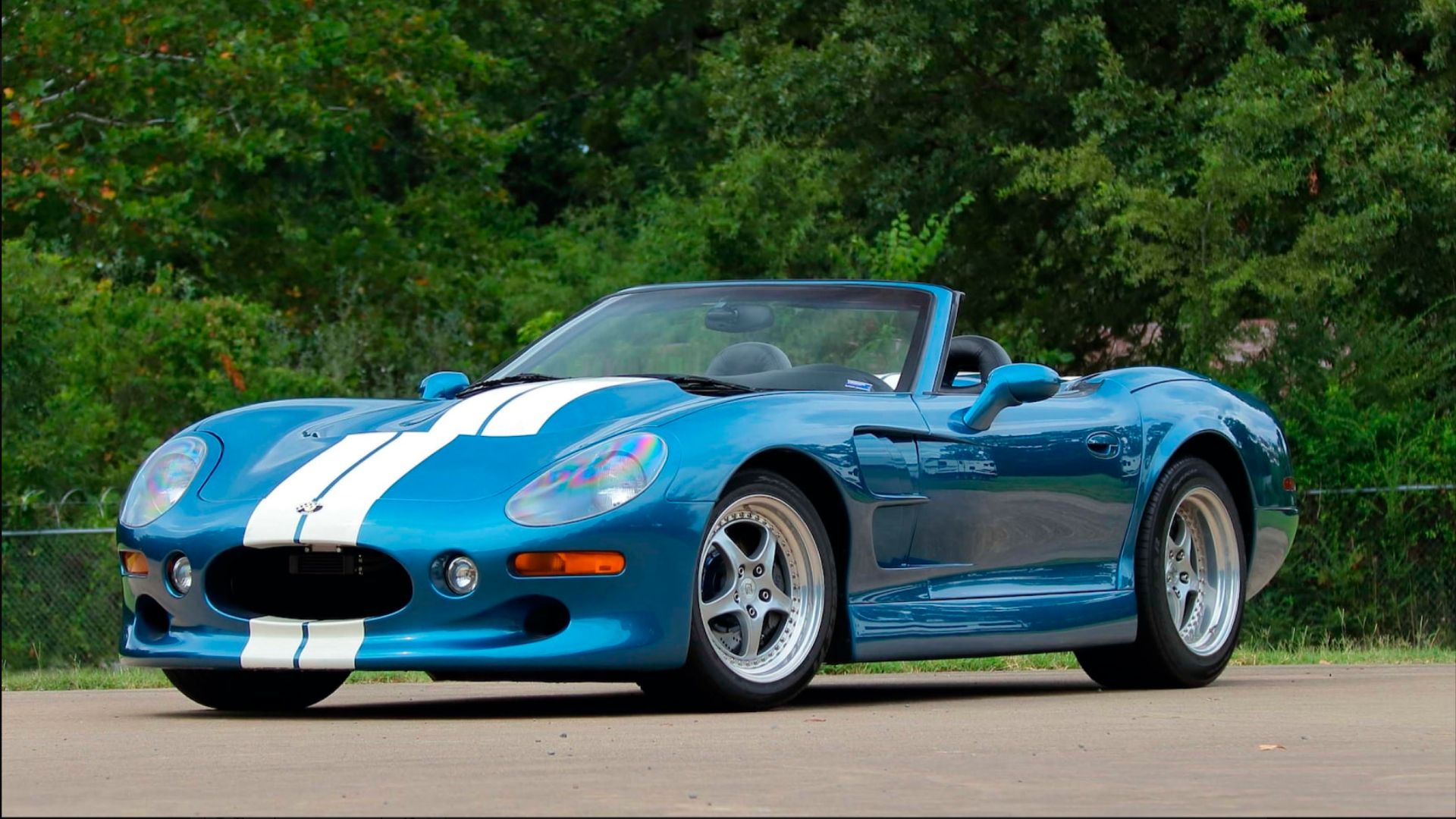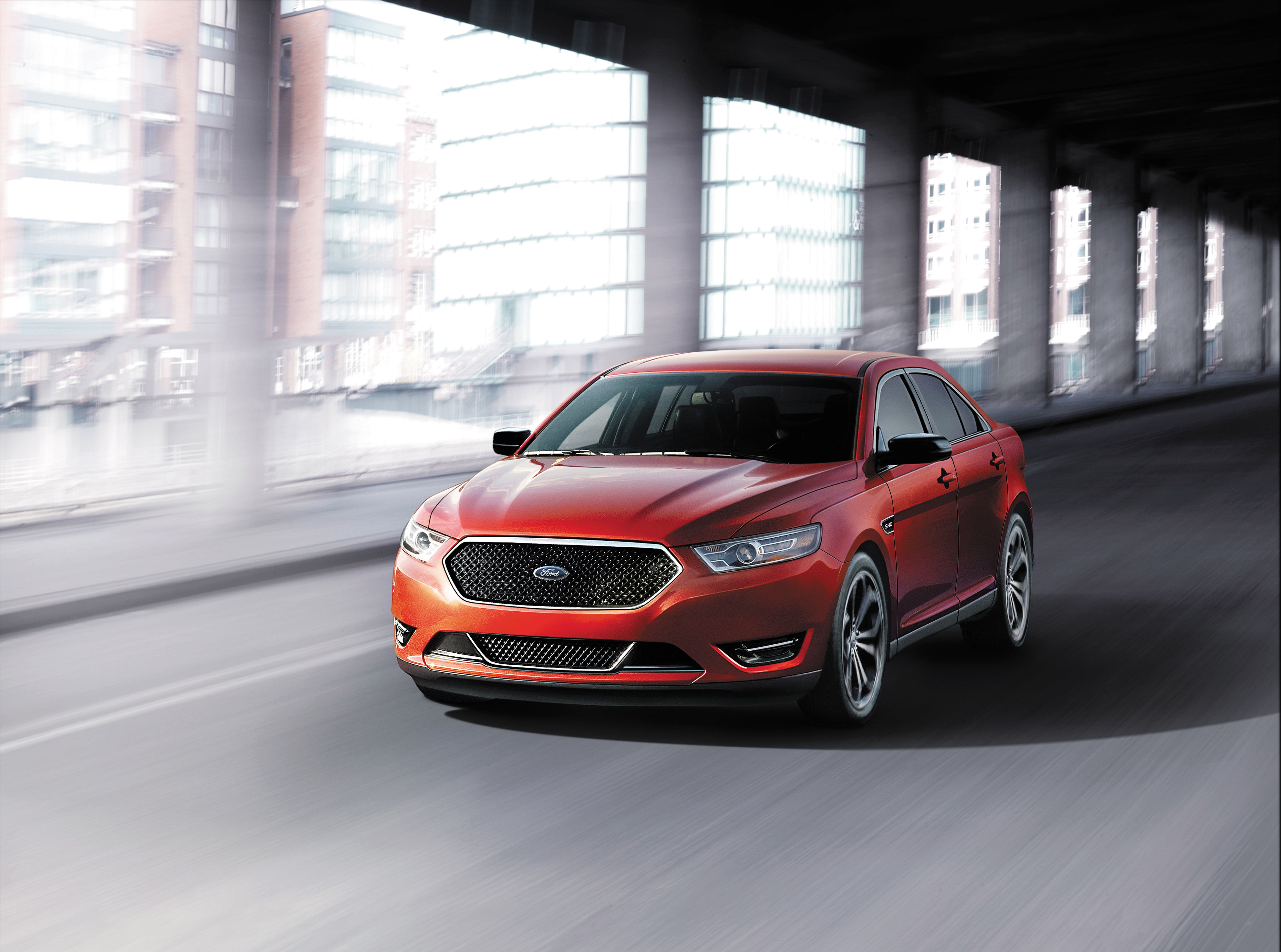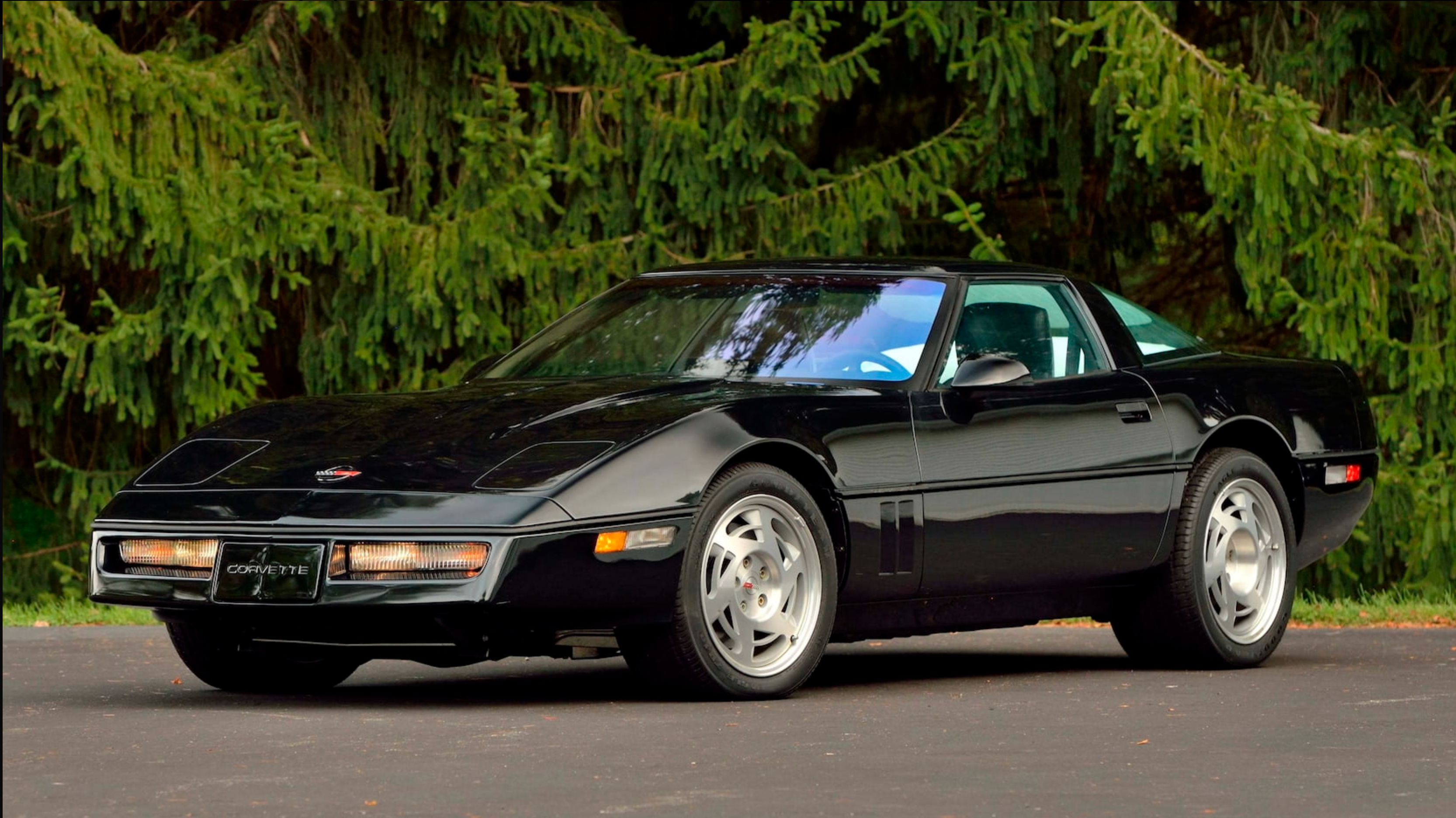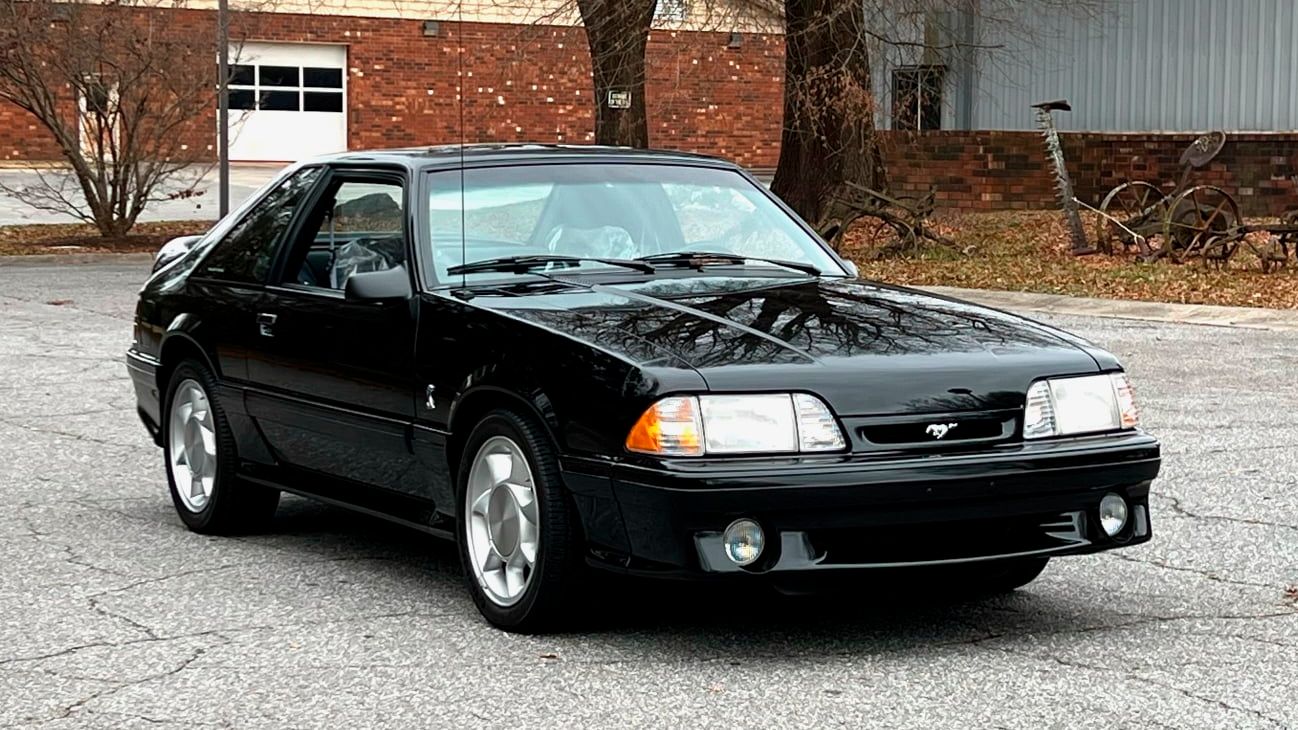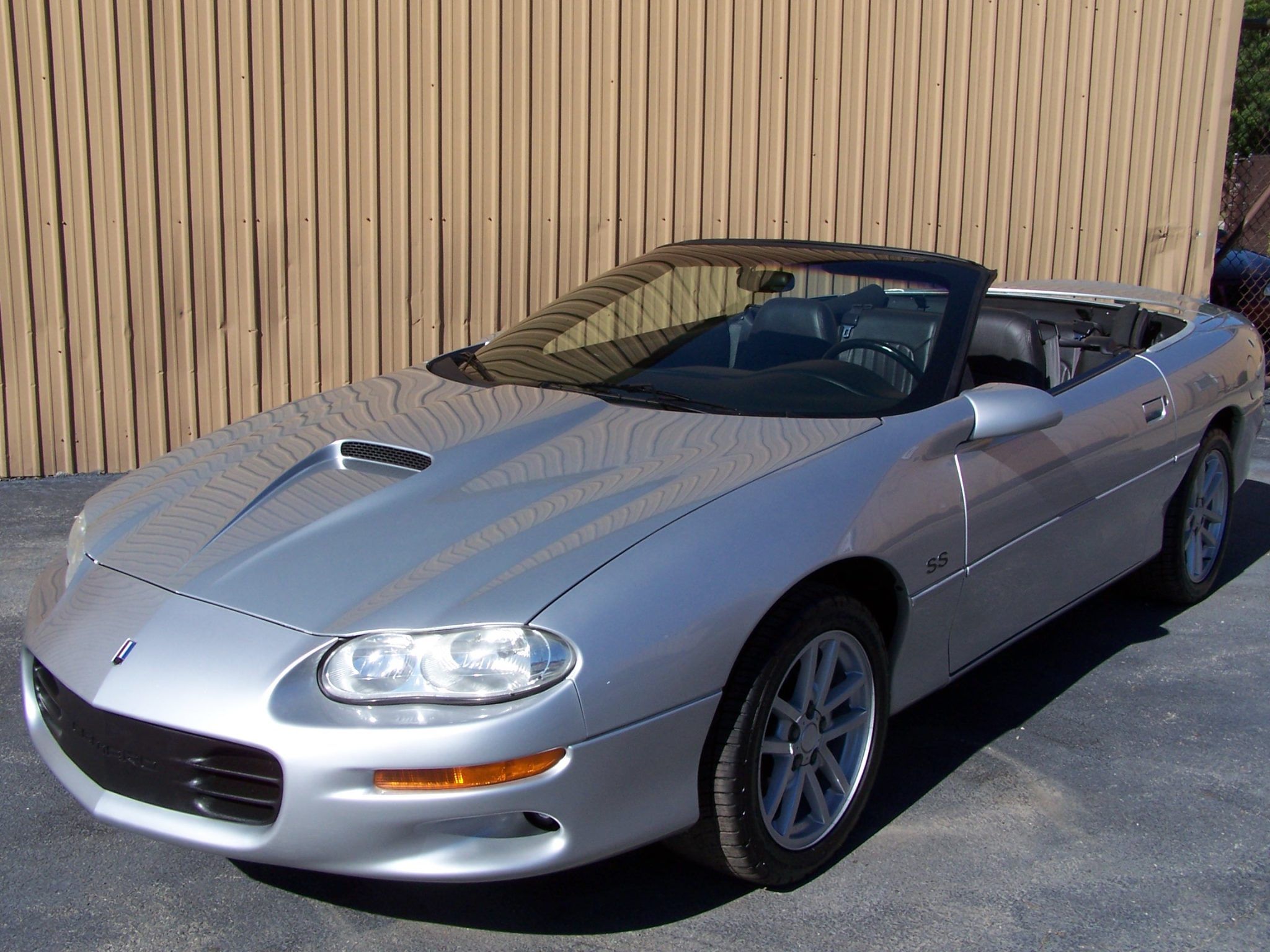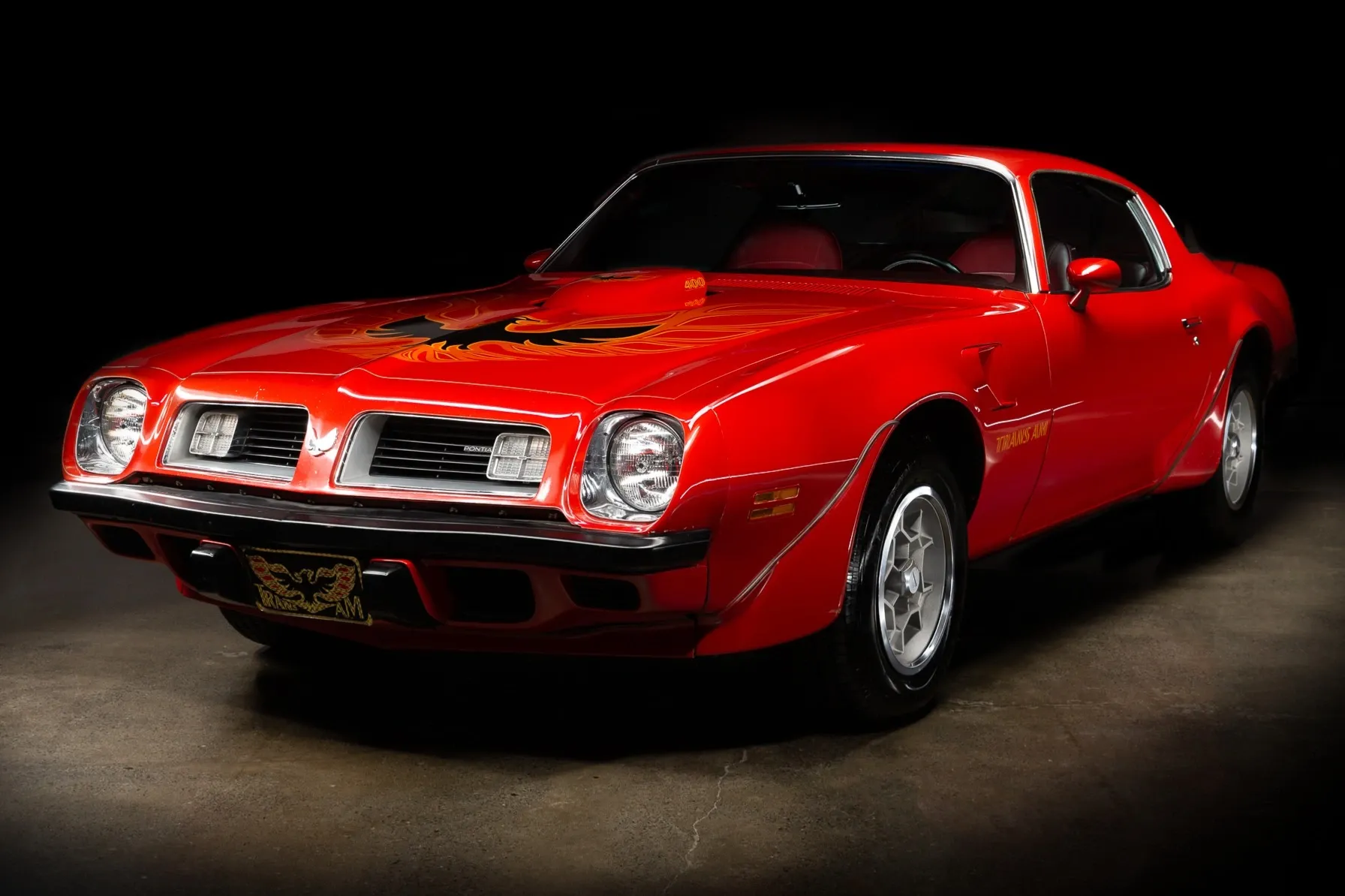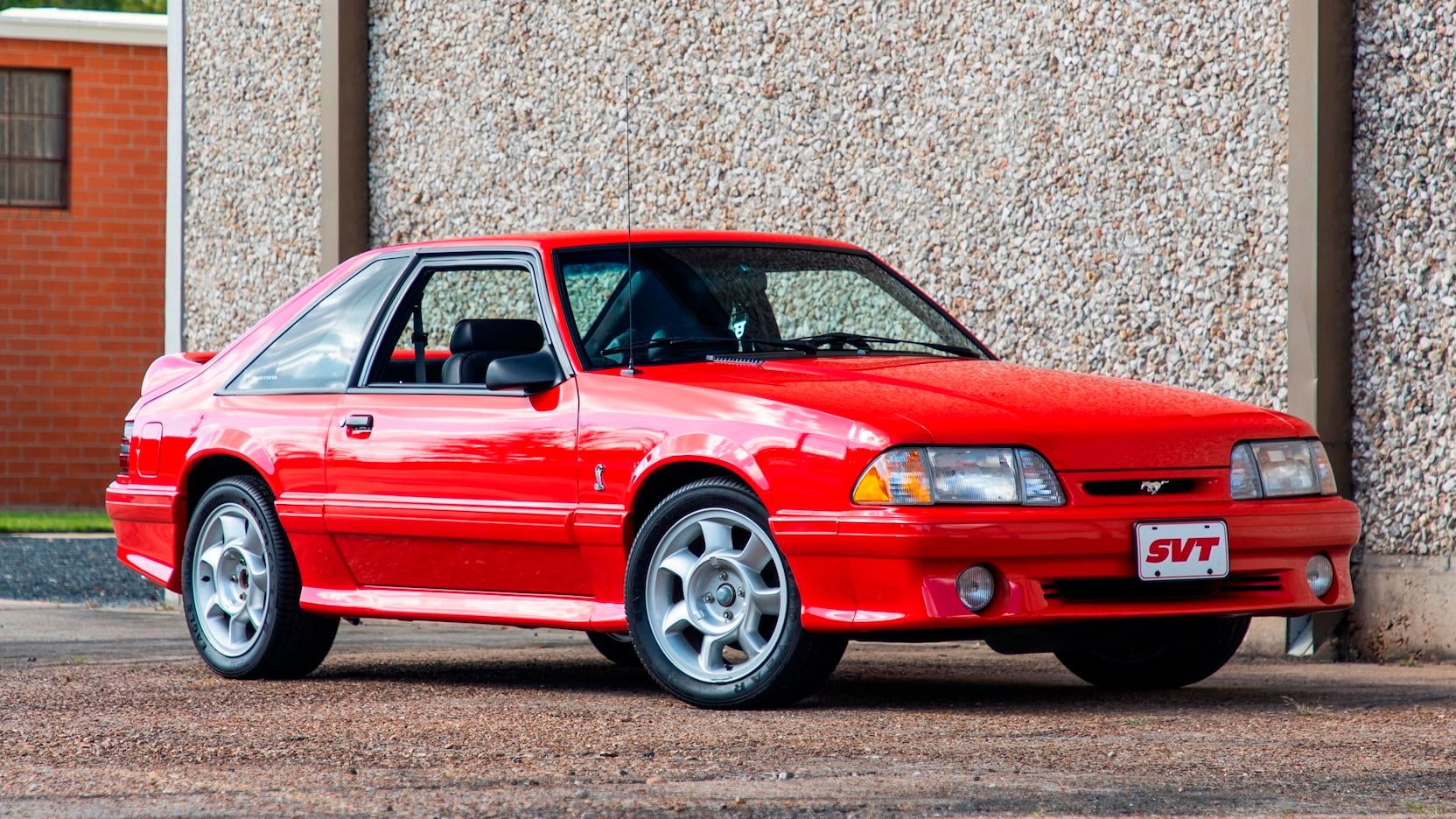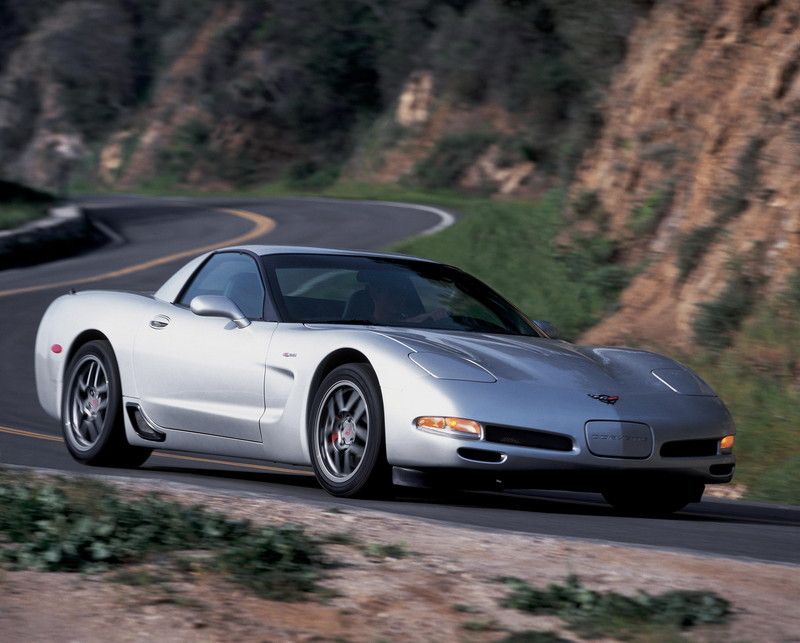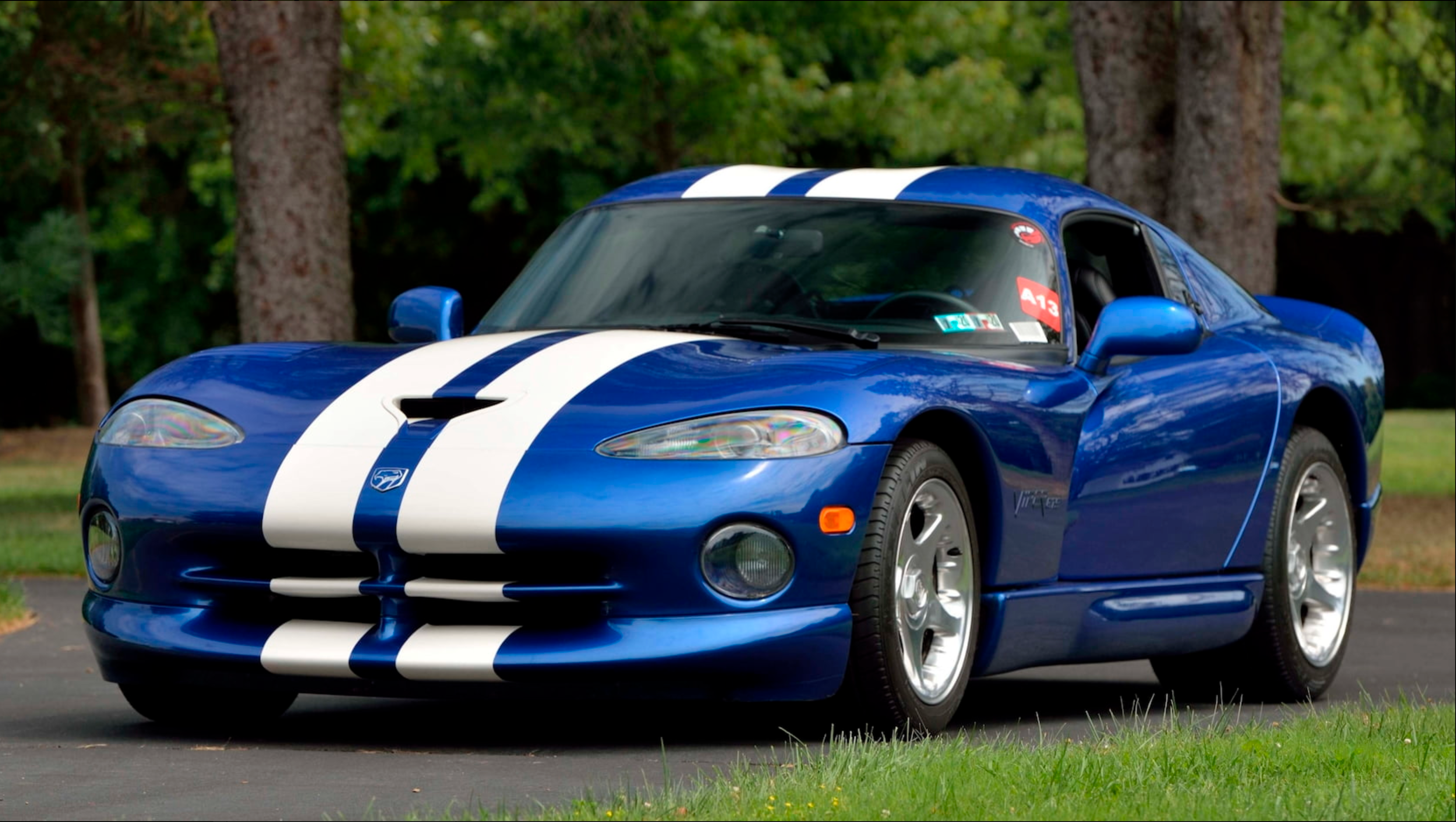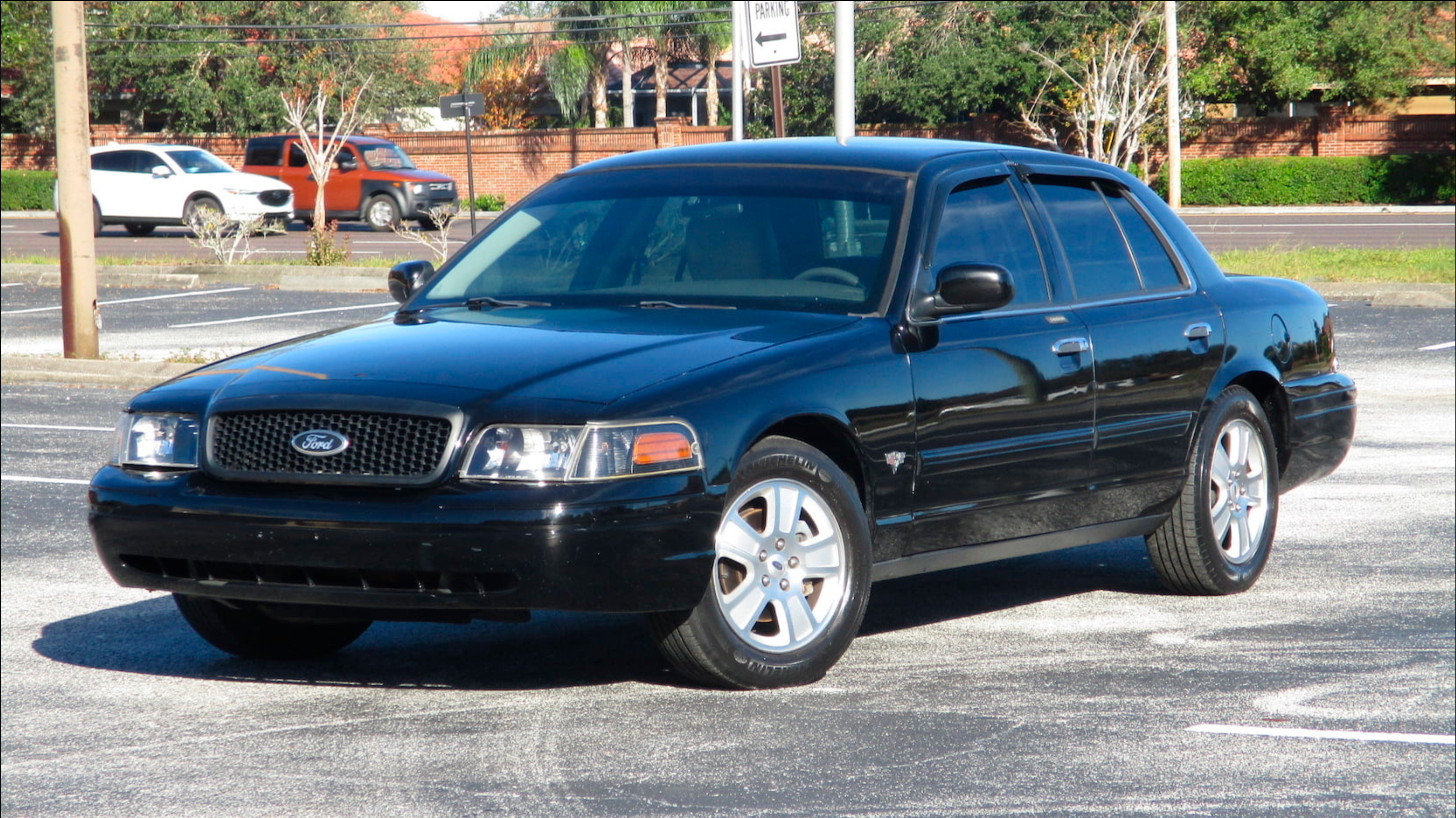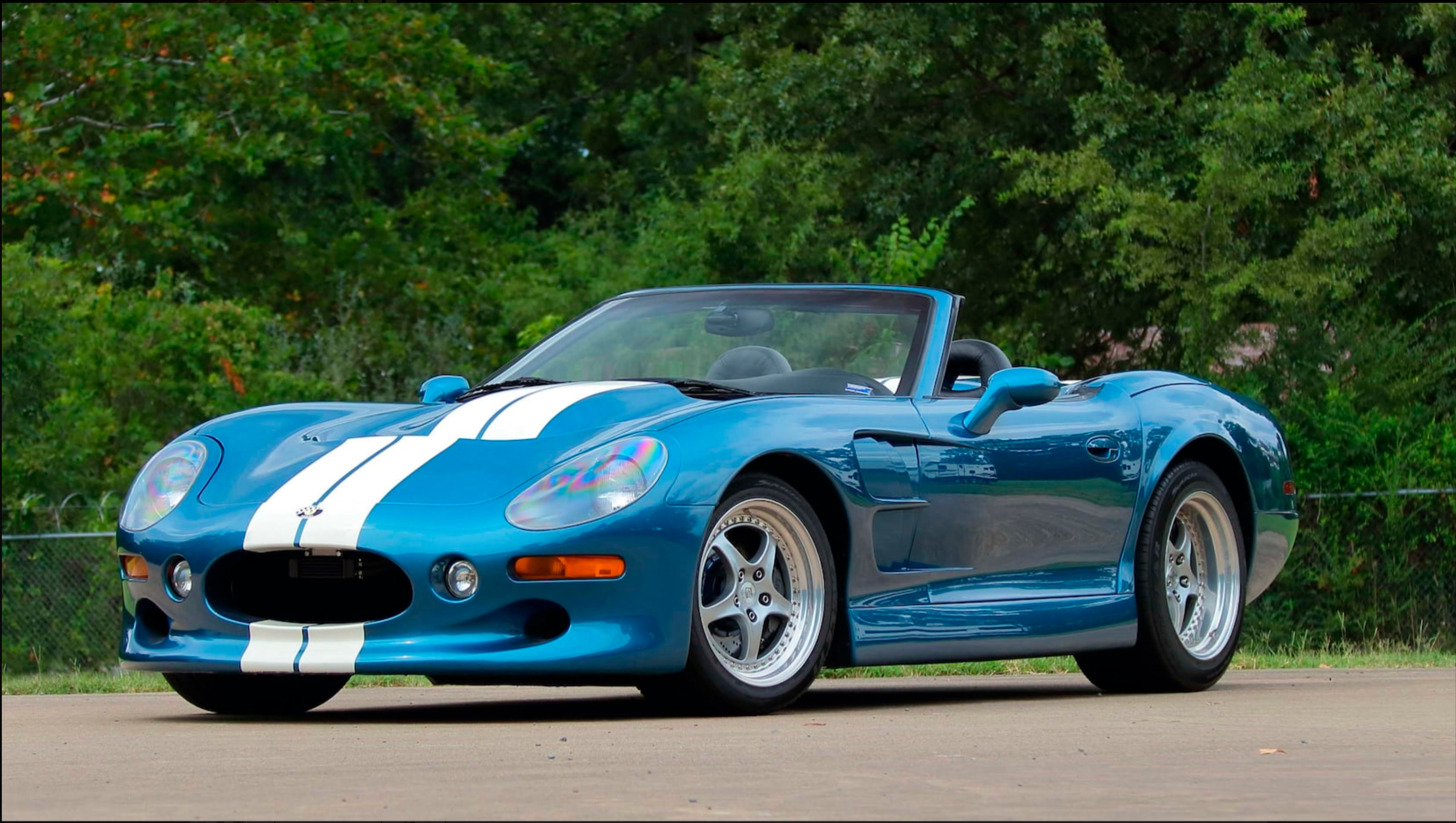When you think of iconic American cars, you probably think of the late-1960s and early-1970s muscle cars. While things, pretty much went to hell after that, the car situation had, gradually, improved by the 1990s and car enthusiasts in the U.S., once again, had plenty of great, high-performance American cars to choose from. Without further due, here are the most iconic American cars from the 1990s.
10 Ford Taurus SHO
There was a time when a Ford Taurus was quicker than a Ford Mustang GT. When the second-generation Ford Taurus Super High Output (SHO) came out, in 1992, it still had the Yamaha-designed 3.0-liter V-6. The 1993 model year introduced a bigger 3.2-liter version of the engine, which produced the same 220 horsepower, but now made 215 pound-feet (292 Nm) instead of the 3.0-liter’s 200 pound-feet (271 Nm). The engine had a redline of 7,000 RPM and was mated to a five-speed manual transmission with 3.73 gears, designed by Mazda. The second-generation also had an optional four-speed automatic. With the manual gearbox, the 0 to 60 mph (97 km/h) sprint took 6.5 seconds while the top speed was 143 mph (230 km/h).
|
Engine |
3.2-liter V-6 |
|---|---|
|
Power |
220 HP |
|
Torque |
215 LB-FT |
|
Transmission |
Five-speed manual |
|
0 to 60 mph |
6.5 seconds |
|
Top Speed |
143 mph |
9 Chevrolet Corvette C4 ZR-1
The Corvette C4 is often seen as the worst generation Corvette, but it’s currently the easiest way to get a top-of-the-range Chevrolet Corvette without having to sell any internal organs. The C4 Corvette ZR-1 started as an idea for the fastest production car. After GM acquired Lotus, in 1986, the Corvette division started working closely with Lotus engineers in order to create the C4 ZR-1. The most notable difference of the C4 ZR-1 was the new engine, in place of the old L98 V-8. The new LT5 engine was still a 5.7-liter V-8, but featured DOHC and 32 valves. Lotus’s expertise resulted in 375 horsepower at 5,800 RPM and 370 pound-feet (502 Nm) at 4,800 RPM. Despite being 200 pounds (91 kg) heavier than the standard C4 Corvette, the ZR-1 managed a 0 to 60 mph (97 km/h) sprint in 4.5 seconds, on to a top speed of 176 mph (284 km/h). Power was routed through a six-speed ZF manual.
|
Engine |
5.7-liter V-8 |
|---|---|
|
Power |
375 HP @ 5,800 RPM |
|
Torque |
370 LB-FT @ 4,800 RPM |
|
Transmission |
Six-speed ZF manual |
|
0 to 60 mph |
4.5 seconds |
|
Top Speed |
176 mph |
8 Ford Mustang SVT Cobra R "Fox-Body"
The third-generation Ford Mustang has the longest lifespan, so far. It came out back in 1978 and was produced all the way until 1993. It was in the last year when the most exciting version came out – the SVT Cobra R. The Fox-Body featured a modified version of the “5.0” (it’s actually a 4.9-liter) engine that featured GT40 “high-flow” cylinder heads. The result – 238 horsepower a 4,600 RPM and 280 pound-feet (380 Nm) at 4,000 RPM. Many believe that the Fox-body Mustang Cobra was underrated because of the 14-second quarter-mile time at 98 mph (158 km/h) and 5.7-second tom from 0 to 60 mph (97 km/h) sprint. Power went to the rear through a “beefed-up” T5, five-speed manual.
|
Engine |
4.9-liter V-8 |
|---|---|
|
Power |
238 HP @ 4,600 RPM |
|
Torque |
280 LB-FT @ 4,000 RPM |
|
Transmission |
Five-speed manual |
|
Quarter mile |
14 seconds @ 98 mph |
|
Top Speed |
176 mph |
7 Chevrolet Camaro SS "Catfish"
The fourth-generation Chevy Camaro is one of the most recognizable ones and even has a hilarious nickname, which reflects that. It’s called the “Catfish” because it looks like an actual catfish, especially at the front. The fourth-generation Camaro was underpinned by the same F-platform from the third-generation Camaro. The fourth-generation Chevy Camaro SS came with a variety of 5.7-liter Pushrod V-8s. In 1997, the iconic LS1 engine was introduced. The V-8 versions produced up to 330 horsepower and 345 pound-feet (468 Nm). With the T56, six-speed manual feeding power to the rear, the 0 to 60 mph (97 km/h) was possible in 5.5 seconds on to a top speed of 160 mph (258 km/h). Back in the 1990s, the Camaro SS was powerful, big, and cheap, which makes it quintessentially American.
|
Engine |
5.7-liter Pushrod V-8 |
|---|---|
|
Power |
330 HP |
|
Torque |
345 LB-FT |
|
Transmission |
Six-speed manual |
|
0 to 60 mph |
5.5 seconds |
|
Top Speed |
160 mph |
6 Pontiac Firebird Trans Am
Much of what makes the fourth-generation Chevrolet Camaro SS great applies to the fourth-generation Pontiac Firebird since they are, essentially, the same car. Both cars debuted around the same time, in 1992, and were based on the old F-platform. Like the “Catfish” Camaro, the Firebird’s high-performance versions came with a variety of 5.7-liter V-8 engines, including the LS1, for which a WS6 performance package was available, including a functional "Ram Air" hood scoop and a high-performance exhaust. Power ranged from 275 to 330 horsepower and up to 345 pound-feet (468 Nm). Like the Camaro, a BorgWarner T56, six-speed manual send power to the rear, which results in a 0 to 60 mph (97 km/h) time of 5.4 seconds. The 1990s would not see the most powerful, Firehawk, version of the Firebird, which got the Corvette version of the LS1 pumping out up to 350 horsepower.
|
Engine |
5.7-liter V-8 |
|---|---|
|
Power |
275 - 330 HP |
|
Torque |
345 LB-FT |
|
Transmission |
Six-speed manual |
|
0 to 60 mph |
5.4 seconds |
5 Ford Mustang SVT Cobra (SN95)
Not to be mistaken with the supercharged “Terminator” Cobra, the 1999 Mustang SVT Cobra features a naturally-aspirated version of the four-valve, 4.6-liter V-8 that makes 320 horsepower at 6,000 RPM and 317 pound-feet (430 Nm) at 4,750 RPM. While not the most powerful version of the SN95 Mustang, the car serves as a baseline for creating some of the most iconic modern-day Mustangs, such as the “Terminator” Cobra and SVT Cobra R. With a five-speed manual, sending power to the rear, the 0 to 60 mph (97 km/h) happens in 4.8 seconds. In 1999, a total of 8,095 units were produced in convertible or coupe body style, and by 2001, the total production run of the non-supercharged SVT Cobra reached 15,346 copies.
|
Engine |
4.6-liter V-8 |
|---|---|
|
Power |
320 HP @ 6,000 RPM |
|
Torque |
317 LB-FT @ 4,750 RPM |
|
Transmission |
Five-speed manual |
|
0 to 60 mph |
4.8 seconds |
4 Chevrolet Corvette C5
The Chevrolet Corvette has been the definitive American sports car for decades, and the C5 is currently the biggest bang for the buck of any of the eight (at the time of writing) Corvette generations. The legendary LS1 comes as standard and packs 345 horsepower at 5,600 RPM and 350 pound-feet (475 Nm) at 4,400 RPM in early versions. While a four-speed automatic is available, the preferred transmission is a BorgWarner T56, a six-speed manual. Thanks to a relatively low weight of just over 3,100 pounds (1,400 kg), the C5 Corvette can sprint from 0 to 60 mph (97 km/h) in 4.5 seconds and reach a top speed of 174 mph (280 km/h).
|
Engine |
LS1 |
|---|---|
|
Power |
345 HP @ 5,600 RPM |
|
Torque |
350 LB-FT @ 4,400 RPM |
|
Transmission |
Six-speed manual |
|
0 to 60 mph |
4.5 seconds |
|
Top Speed |
174 mph |
3 Dodge Viper
For many, Dodge Viper is the true American supercar. The venomous snake is not only pure excess in terms of aesthetics, driving experience, and powerplant, but is a spiritual successor to another “over-the-top” American icon – the Shelby Cobra. Commissioned by Chrysler president, Bob Lutz and designed by Tom Gale, later Carroll Shelby himself was attached to the project. No surprise, given that the idea was to create a modern-day Shelby Cobra. Like the Cobra, the Viper wanted to kill you and had a big engine. In this case, it was an 8.0-liter OHV V-10, based on a truck engine. Earlier models produced just over 400 horsepower with generation-two models bumping it up to 450 horsepower (in reality, 488 horsepower). One thing that never changed was that the Viper had gobs of low-end torque – up to 490 pound-feet (665 Nm). The Viper always came with a T56, six-speed manual, with very long gearing. Even earlier cars could reach from T56, six-speed manual.
|
Engine |
8.0-liter OHV V-10 |
|---|---|
|
Power |
450 HP |
|
Torque |
490 LB-FT |
|
Transmission |
T56, six-speed manual |
|
0 to 60 mph |
3.8 seconds |
2 Ford Crown Victoria
While humble compared to the rest, the Ford Crown Victoria is the epitome of 1990s American motoring. The “Crown Vic” will mostly be remembered as the preferred car of taxi companies and police departments as it “served” as the preferred people-moving and law-enforcement vehicle of choice for many years. Since 2007, the Crown Victoria was available as a fleet car only. What makes the “Crown Vic” an iconic 1990s American car is the simplicity, reliability, and complete lack of sophistication. Power came from the 4.6-liter, Ford modular V-8 that made up to 250 horsepower and 287 pound-feet (389 Nm). Throughout its years of service, the ‘Vic” came with a variety of four-speed automatics. Despite featuring a not-very-inspiring, body-on-frame structure, the “Vic” was the base for some epic performance versions like the Mercury Marauder and Ford Bondurant Crown Victoria, which had up to 355 horsepower and 316 pound-feet (428 Nm).
|
Engine |
4.6-liter, Ford modular V-8 |
|---|---|
|
Power |
250 HP |
|
Torque |
287 LB-FT |
|
Transmission |
Four-speed automatic |
1 Shelby Series 1
If the Dodge Viper was a spiritual successor to the Shelby Cobra, the Shelby Series 1 was a Shelby Cobra, reimagined. The lightweight American roadster came out in 1999 as a very limited-production car – 249 examples in total. It was designed by Carroll Shelby and produced by Shelby American, just like the 1960s Shelby Cobra. Unlike the Cobra, however, it was not powered by a Ford V-8. Instead, it was motivated by a 4.0-liter L47 Aurora, Oldsmobile V-8 engine with DOHC and 32 valves. The standard Series 1 produced 320 horsepower and 290 pound-feet (393 Nm), which was good for a 0 to 60 mph (97 km/h) time of 4.1 seconds and a top speed of 170 mph (274 km/h). The quarter-mile was blasted in 12.8 seconds at 112 mph (180 km/h). A six-speed manual transaxle sent power to the rear wheels. Optional packages included an X50 package that added 50 horsepower and a supercharger kit bumping output to 450 horsepower and 400 pound-feet (542 Nm), but only nine examples had both.
|
Engine |
4.0-liter L47 Aurora, Oldsmobile V-8 engine |
|---|---|
|
Power |
320 HP |
|
Torque |
290 LB-FT |
|
Transmission |
Six-speed manual |
|
0 to 60 mph |
4.1 seconds |
|
Top Speed |
170 mph |

